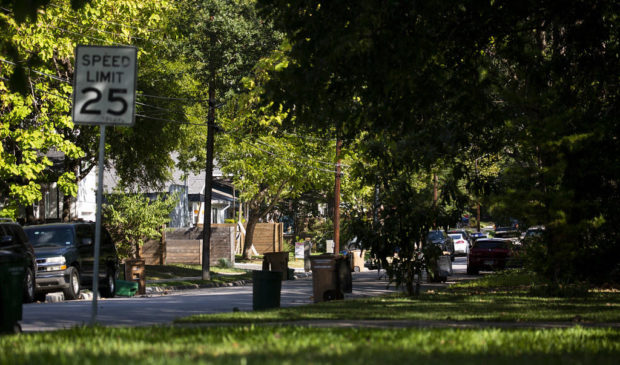Take a look at what could be built under Austin’s proposed new land code
Thursday, February 6, 2020 by
Audrey McGlinchy, KUT On Wednesday, the city of Austin revealed some models of what could be built under the proposed new Land Development Code, the rules that dictate what can be built in the city and where.
It’s important to note that in most cases the images show the maximum of what could be built. Developers could decide to build fewer units and smaller homes, or the specifics of a certain piece of land could make it hard to build the maximum number.
In the models below, R stands for residential and the number following it generally indicates the total number of homes that could be built. For example, R3 stands for a residential zone where a developer could build up to three homes.
If the land you live on is zoned R2
Under the latest draft of the new code, roughly 21 percent of the city would be zoned R2. If your land is zoned R2 and you have a 5,000-square-foot lot (which is considered small), you could build one 2,000-square-foot house.
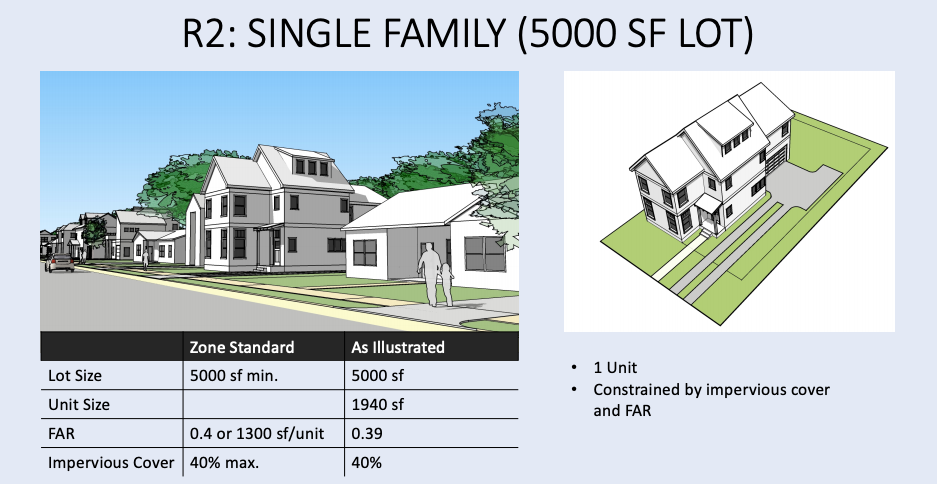
If you wanted to build two homes on that 5,000-square-foot lot, each home would have to be a bit smaller. That’s illustrated below:
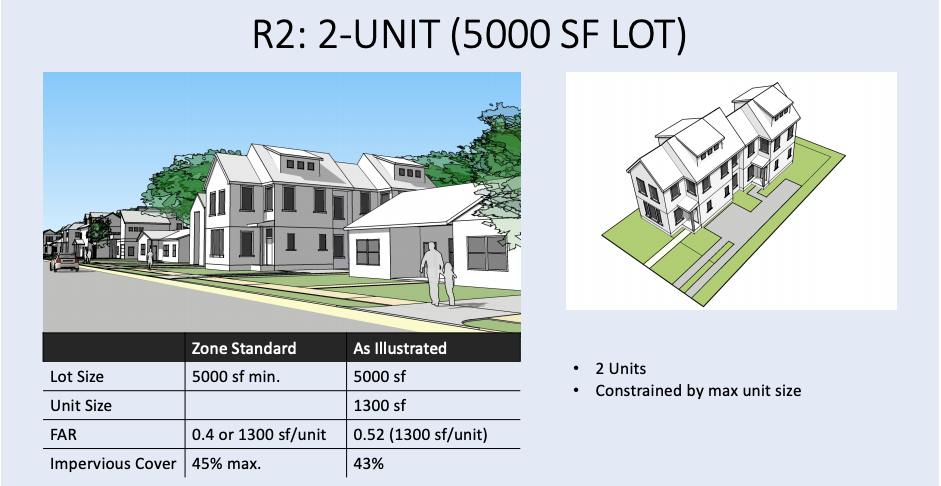
If you want bigger homes, you’ll likely need a bigger lot. In this case, the city has modeled two 1,700-square-foot homes below:
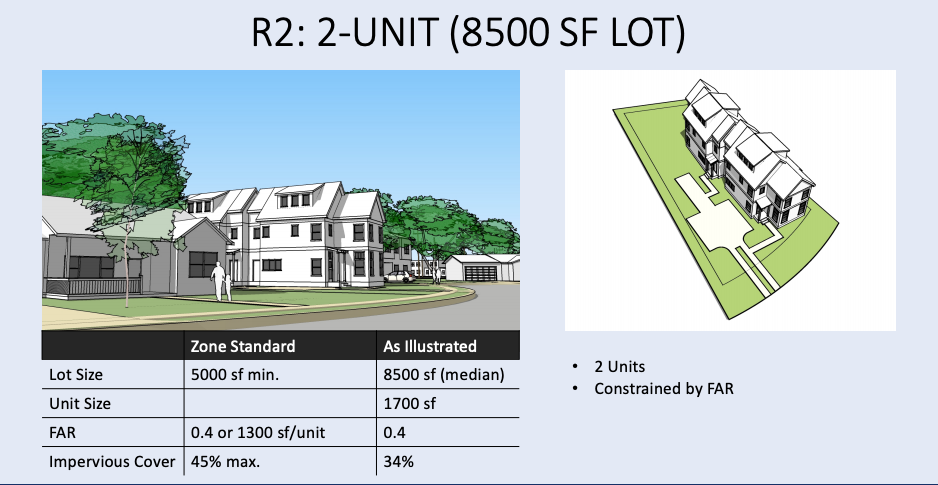
If the land you live on is zoned R3
A very small portion of the city – about 0.2 percent – is proposed to be zoned R3. The median square footage of these affected lots is just over 7,000 square feet. Below you can see that you might get three 1,000-square-foot homes on a piece of land that size:
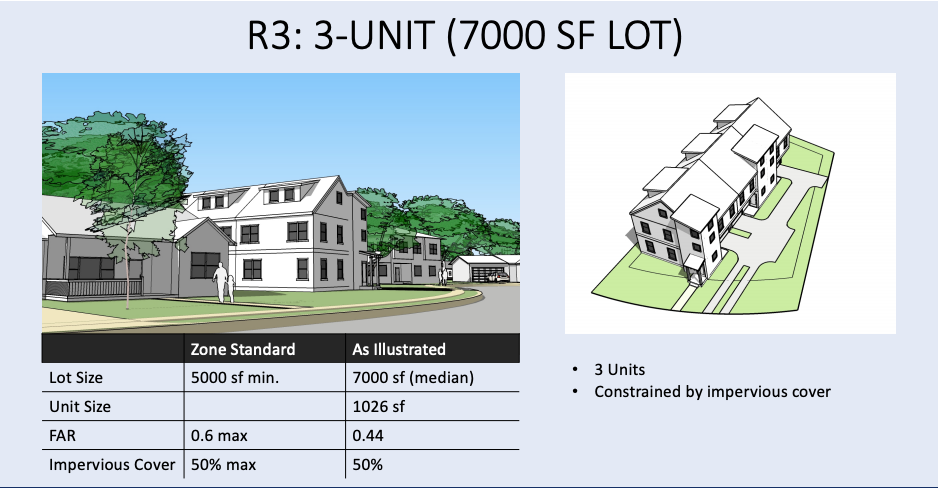
The city has proposed a program to encourage people not to demolish older homes. If you own a home that’s 30 years old or older, you can build more on your land as long as you don’t knock down that home. Here’s what that could look like in an R3 zone:
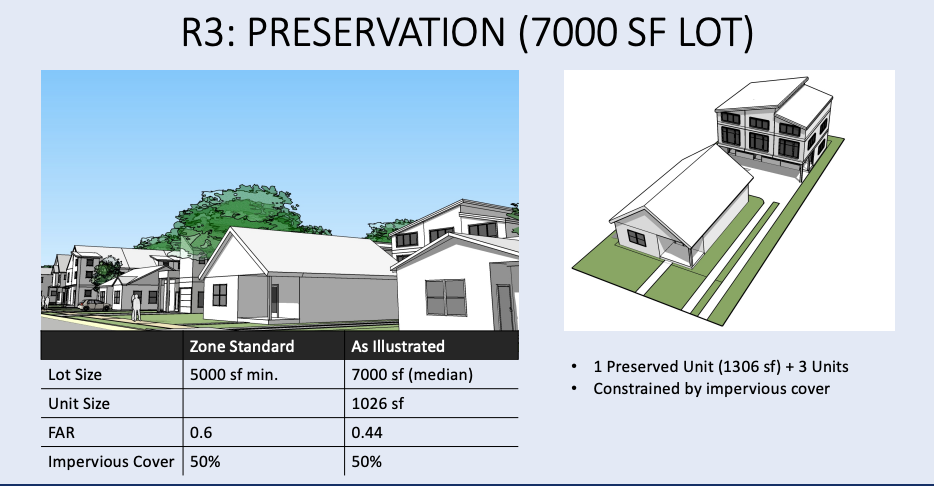
If the land you live on is zoned R4
Only 1.5 percent of the city is proposed to be zoned with the new R4. If that includes where you live, here’s what new development could look like. You’d get a fourplex with roughly 1,000-square-foot homes.
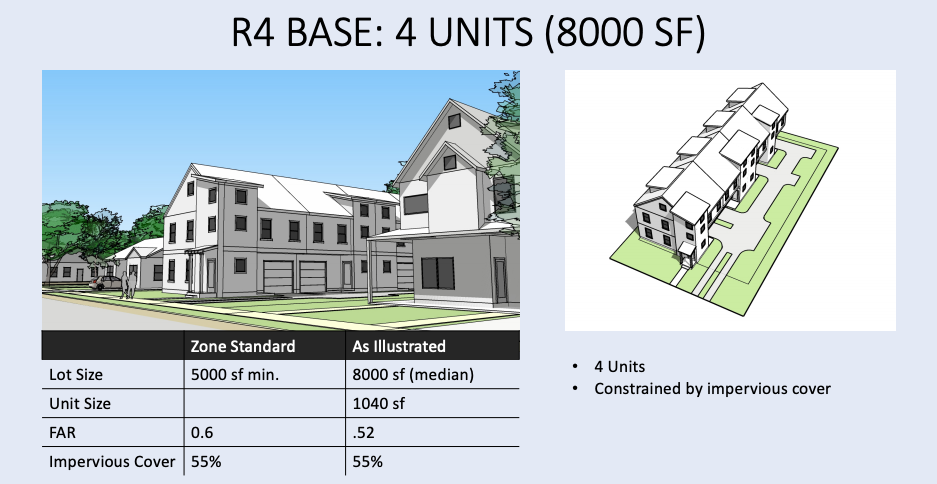
Under this zoning category, you can build up to eight units if you agree either to put money into the city’s affordable housing coffers or build the affordable housing yourself. In parts of the city susceptible to gentrification, the developer would not have the option to pay the fee and would have to build the affordable housing. If those four additional houses get built, you’d get eight slightly smaller homes.
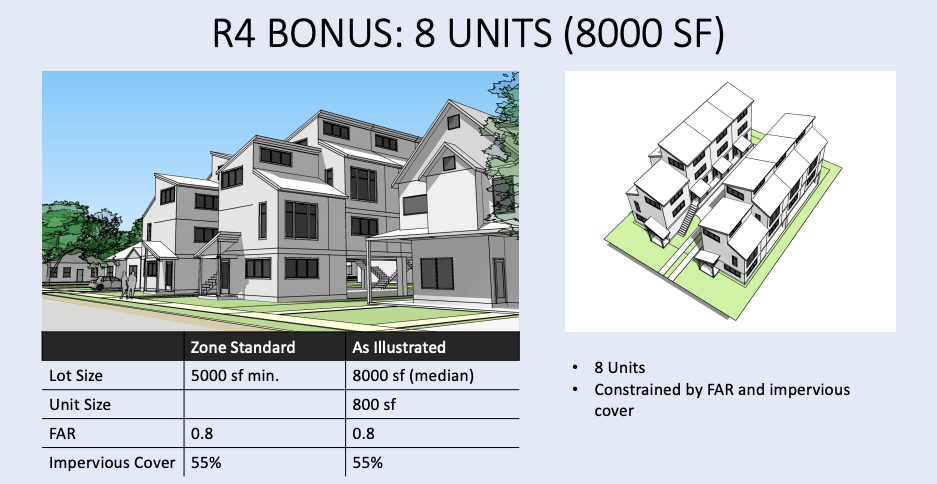
If the land you live on is zoned RM1
This zone is also rare (about 1 percent of the city), but could be found in some neighborhoods. Here’s what six housing units could look like on a smaller lot, or 5,000 square feet:
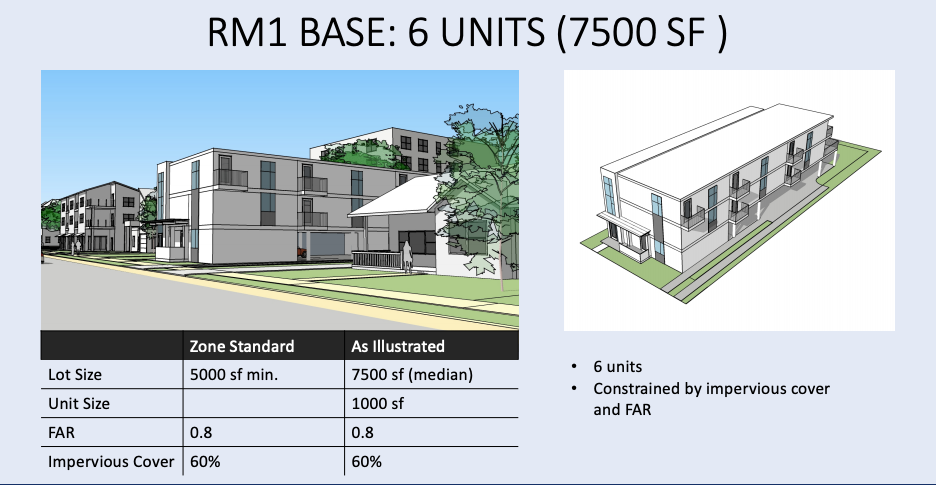
This zone also includes an option that allows a developer to build more units in exchange for building affordable housing or putting money toward it. The developer could build up to 10 units if it agrees to the affordable housing bonus; but again, that doesn’t mean affordable housing would be built on this plot of land.
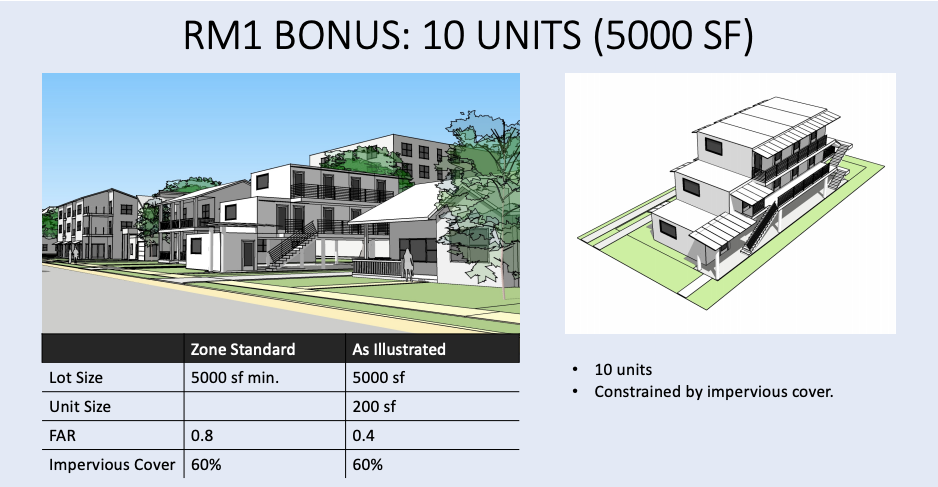
There are more models drawn up by the city, including for much larger, commercial and mixed-use properties. You can see all the renderings by scrolling to the end of the document below:
Download (PDF, 27MB)
This story was produced as part of the Austin Monitor’s reporting partnership with KUT. Photo by Gabriel C. Pérez/KUT.
The Austin Monitor’s work is made possible by donations from the community. Though our reporting covers donors from time to time, we are careful to keep business and editorial efforts separate while maintaining transparency. A complete list of donors is available here, and our code of ethics is explained here.
You're a community leader
And we’re honored you look to us for serious, in-depth news. You know a strong community needs local and dedicated watchdog reporting. We’re here for you and that won’t change. Now will you take the powerful next step and support our nonprofit news organization?

